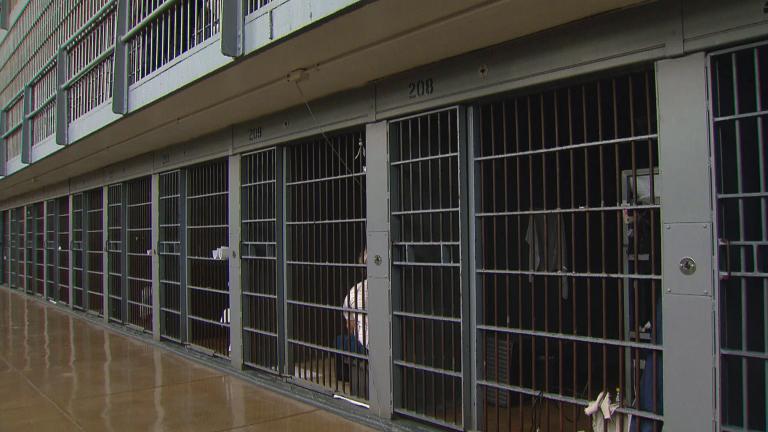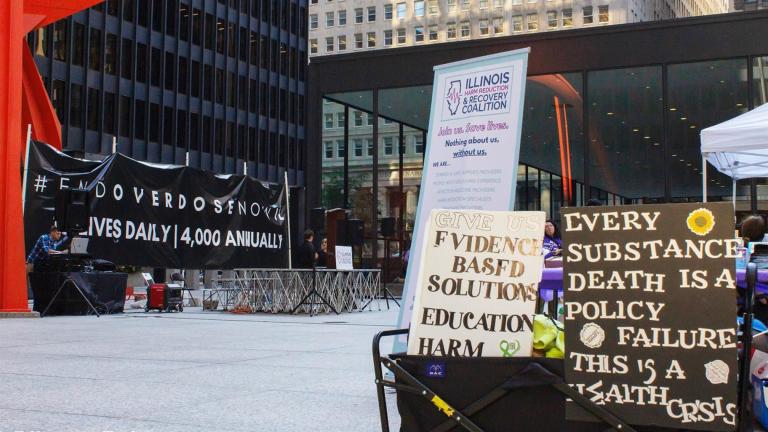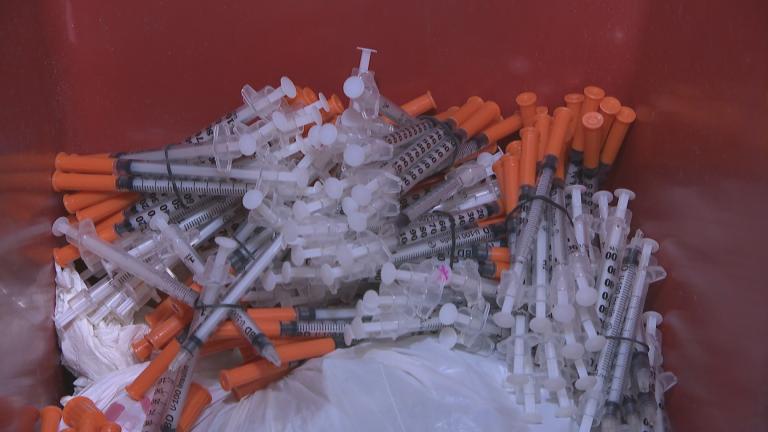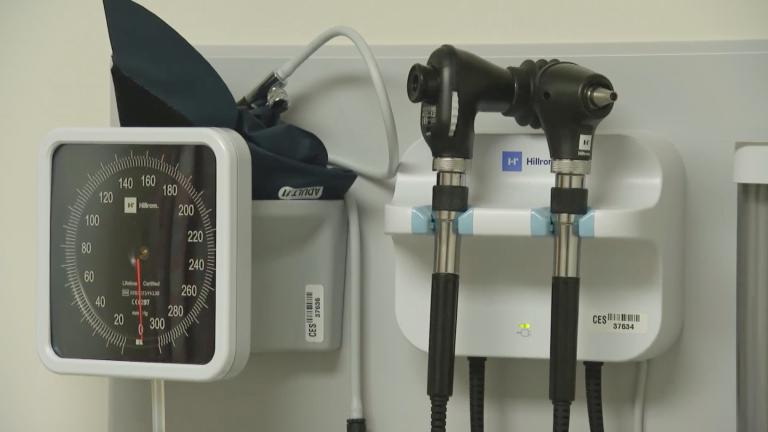Melzinnia Connolly has one constant companion: her pain.
“By two o’clock this afternoon, I feel like I’m dragging my left side of my body,” Connolly said. “By that night, I’m in sheer pain; only thing I can do is lay down and complain.”
The 66-year-old Norwood Park grandmother has been struggling since 2006, when she awoke with a burning sensation in her feet. It took more than a decade, she said, to arrive at a diagnosis of nerve damage and finally get what she needed: opioids.
“It allows you to manage … at least you’re able to keep your house clean and go to the grocery store,” Connolly said.
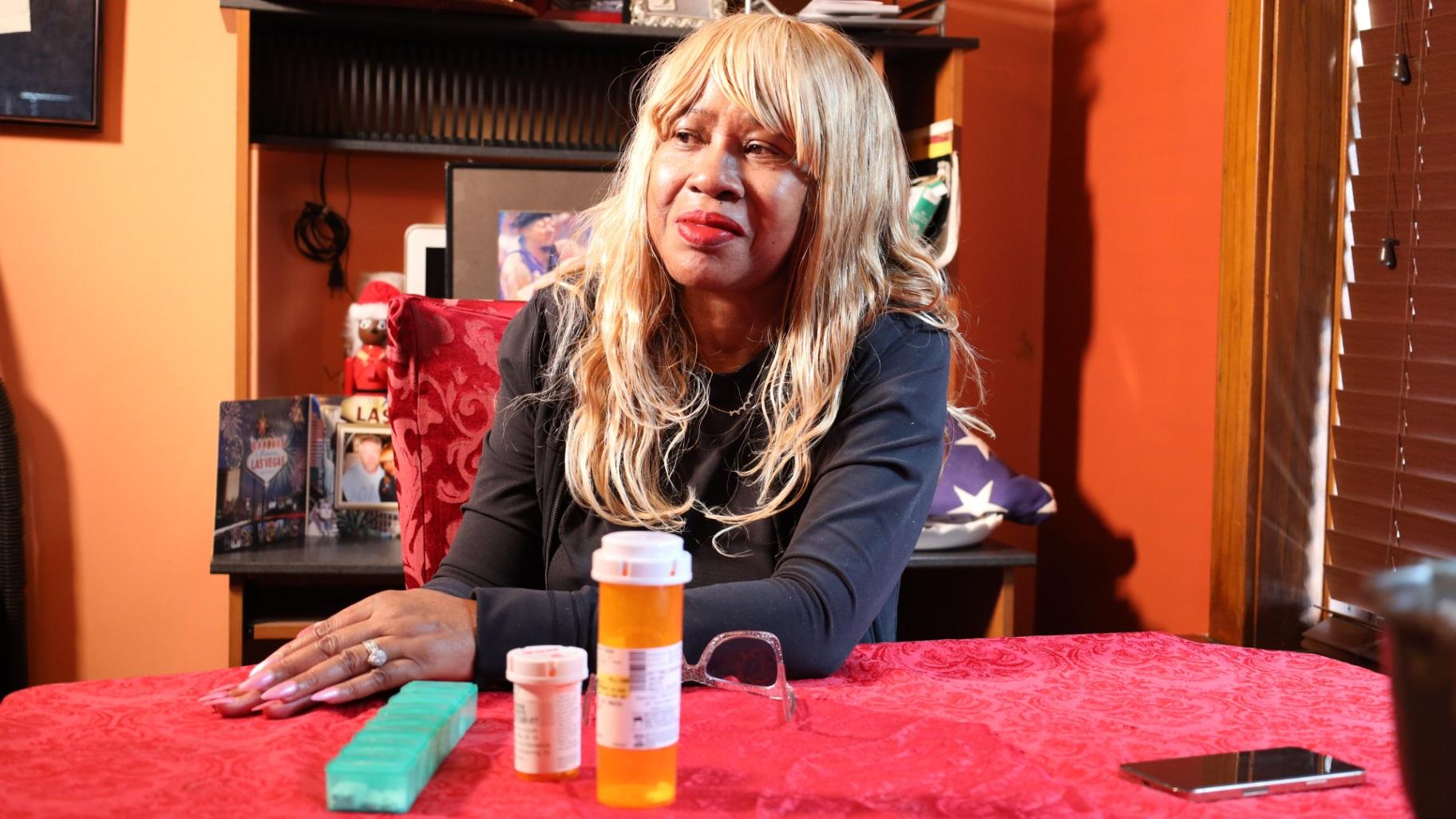 Melzinnia Connolly, of Norwood Park, on Feb. 6, 2024. Connolly has been diagnosed with nerve damage and was prescribed opioids. (DePaul’s Center for Journalism Integrity and Excellence)
Melzinnia Connolly, of Norwood Park, on Feb. 6, 2024. Connolly has been diagnosed with nerve damage and was prescribed opioids. (DePaul’s Center for Journalism Integrity and Excellence)
Opioid medications like oxycodone, hydrocodone and morphine are used in treatment for moderate to severe pain. Connolly’s medication, Percocet, is a combination of oxycodone and acetaminophen.
The relief Connolly has finally found is now at risk. After decades of skyrocketing overdose deaths linked to prescription opioid pain medication, the federal government has limited the manufacturing and dispensing of these drugs.
According to the Illinois Prescription Monitoring Program, both the number of opioid prescriptions written and the number of patients served dropped by almost half since 2015.
Connolly said she has been denied medication by pharmacists many times. She has traveled around the Chicagoland area, stopping at pharmacies in Wheeling, Deerfield, Highland Park, downtown Chicago and Harwood Heights to see if one of these pharmacies would fill her prescription.
“You are the one walking in and hoping and praying that this pharmacist will have sympathy, empathy and help you fill this prescription,” Connolly said.
Connolly, a former caregiver and anti-sexual assault advocate, said that although her medication allows her to function, she is still in constant pain, exacerbated by the lack of consistent access to medication.
Other chronic pain patients share her experience.
Christy Ernst, 67, from Sandwich, Illinois, struggles to attend her grandchildren’s sporting events due to her constant pain.
“I would love to go and participate,” Ernst said. “But there’s just some days when I’ll get my coat on, and I’ll just be in tears. I can’t do it.”
Ernst, diagnosed with osteoarthritis in her early 20s, has endured various injuries over the years, though she has tried to maintain an active lifestyle in spite of eight back surgeries and five knee replacements. Her treatment includes up to six daily Percocet doses and an opioid patch for pain.
 Christy Ernst on Feb. 23, 2024. Ernst was diagnosed with osteoarthritis in her early 20s and has required numerous surgeries. Her treatment includes up to six daily Percocet doses and an opioid patch for pain. (DePaul’s Center for Journalism Integrity and Excellence)
Christy Ernst on Feb. 23, 2024. Ernst was diagnosed with osteoarthritis in her early 20s and has required numerous surgeries. Her treatment includes up to six daily Percocet doses and an opioid patch for pain. (DePaul’s Center for Journalism Integrity and Excellence)
Ernst said she has experienced a shift in pharmacists’ treatment of her as a chronic pain patient. When trying to fill prescriptions at a popular chain pharmacy, she’s told the drugs are out of stock.
Now, Ernst and her husband must make a two-hour round trip to a hospital pharmacy in Naperville for her medication.
“It’s a whole different dynamic, very helpful, very kind, very communicative,” Ernst said. “They would call and say, ‘You know what, we’re having trouble getting these, but we can give you two weeks instead of a month.’”
The View From a Family-Owned Pharmacy
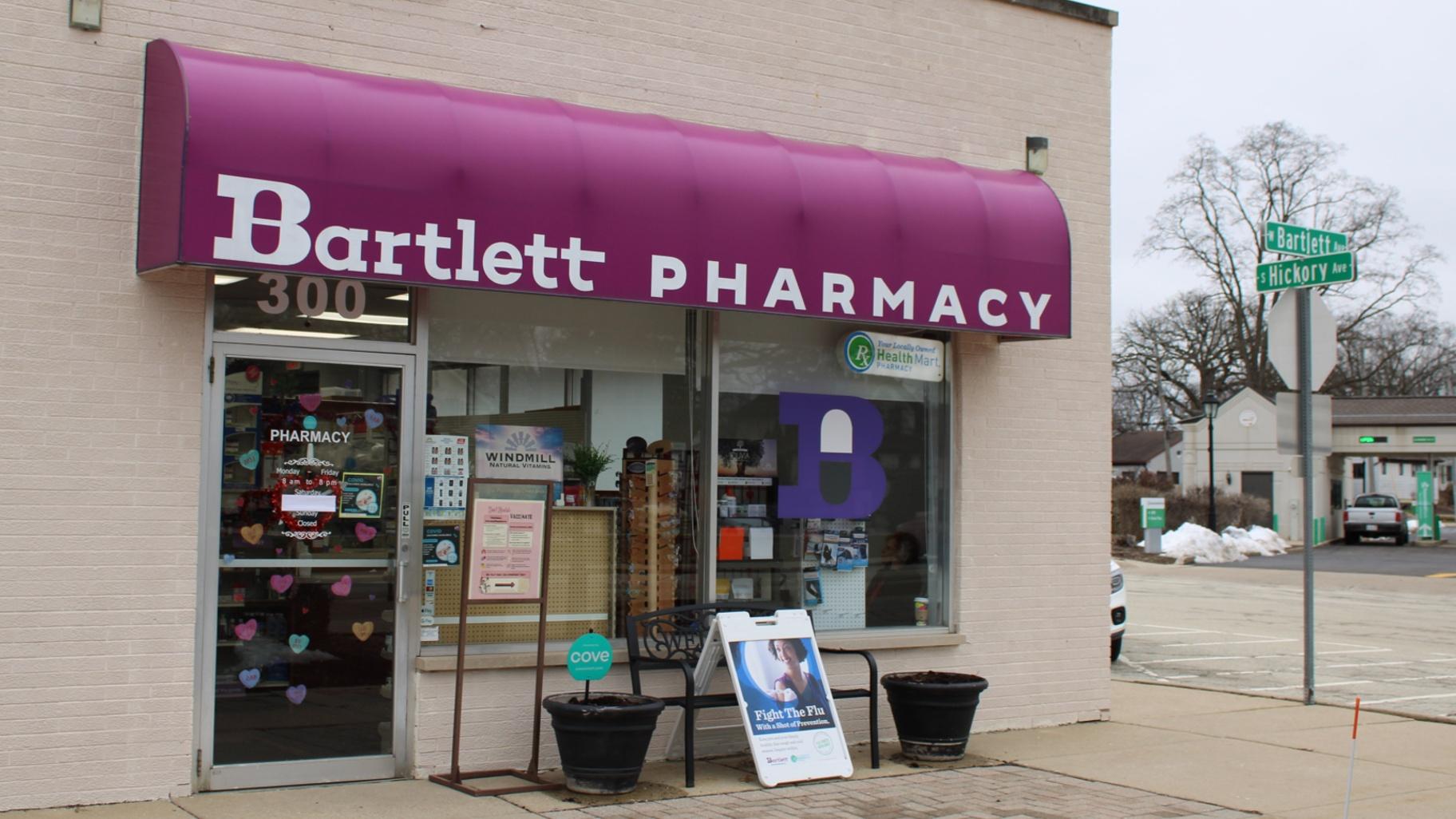 Bartlett Pharmacy in Bartlett, Illinois. (DePaul’s Center for Journalism Integrity and Excellence)
Bartlett Pharmacy in Bartlett, Illinois. (DePaul’s Center for Journalism Integrity and Excellence)
Nahren Khoshaba owns and operates an independent pharmacy in Bartlett, Illinois. She said a reduction in opioid production has placed a burden on patients, pharmacies and doctors.
“Because we have limited supply, we have to kind of pick and choose which patients can get their meds and not, which really puts us in an unfair situation,” Khoshaba said.
To address rising overdose deaths, the CDC’s 2016 guidelines urged restrictions on doctors’ opioid prescriptions and rapid tapering of patient doses, resulting in reduced or discontinued opioid use for millions of Americans.
Though the CDC loosened some of those guidelines in 2022, the damage had already been done, according to addiction medicine physician Dr. Elise Wessol.
“Even when a person is just advocating for themselves, they are stigmatized,” Wessol said. “‘Oh, this person is asking for opioids, they must be an addict, we can’t prescribe,’ instead of just viewing that they’re in pain.”
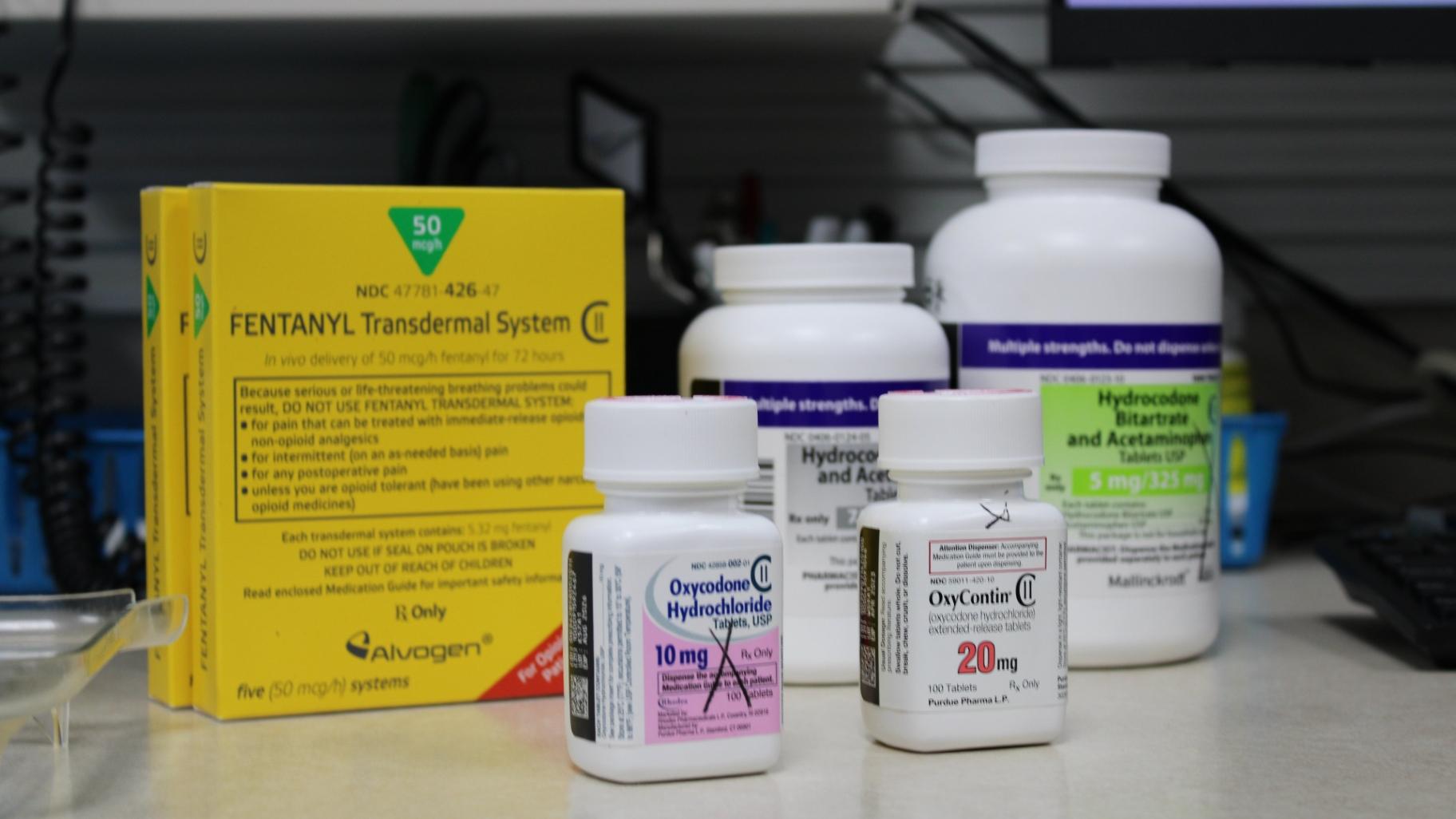 Bottles of opioid medication at Bartlett Pharmacy. (DePaul’s Center for Journalism Integrity and Excellence)
Bottles of opioid medication at Bartlett Pharmacy. (DePaul’s Center for Journalism Integrity and Excellence)
Chris Herndon, a professor at Southern Illinois University Edwardsville School of Pharmacy, said the term “addict” is no longer used. Instead, patients are diagnosed as suffering from opioid use disorder, a neurobiological disease.
Herndon argues that opioid use disorder is not a willpower issue.
“In essence, when you are susceptible to substance use disorder, namely opioid use disorder, the frontal portions of the brain that control our executive decision-making, that risk-versus-benefit analysis that we all do on a daily basis, really becomes faulty,” Herndon said. “The continued use of that substance becomes the only thing that that person suffering from that disease can focus on.”
A study published in January on opioid use disorder reported that more than 16 million people are affected globally, 2.1 million in the United States.
As for Connolly and Ernst, they will continue to battle their chronic pain with a limited supply of opioid medication that makes their lives bearable.
“People look at you and say, ‘You look fine. I don’t understand,’” Ernst said. “And I don’t know how to explain it. But it’s pervasive, and it’s there all the time. Like a rock in your shoe, it’s there.”

